pytorch复现4_Resnet
ResNet在《Deep Residual Learning for Image Recognition》论文中提出,是在CVPR 2016发表的一种影响深远的网络模型,由何凯明大神团队提出来,在ImageNet的分类比赛上将网络深度直接提高到了152层,前一年夺冠的VGG只有19层。ImageNet的目标检测以碾压的优势成功夺得了当年识别和目标检测的冠军,COCO数据集的目标检测和图像分割比赛上同样碾压夺冠,可以说ResNet的出现对深度神经网络来说具有重大的历史意义。

在resnet出现之前,网络层数的增加会导致梯度消失或者梯度爆炸
在ResNet网络中有如下几个亮点:
(1)提出residual结构(残差结构),并搭建超深的网络结构(突破1000层)
(2)使用Batch Normalization加速训练(丢弃dropout)
残差结构(residual)
下图是论文中给出的两种残差结构。左边的残差结构是针对层数较少网络,例如ResNet18层和ResNet34层网络。
右边是针对网络层数较多的网络,例如ResNet101,ResNet152等。
为什么深层网络要使用右侧的残差结构呢。因为,右侧的残差结构能够减少网络参数与运算量。同样输入、输出一个channel为256的特征矩阵,如果使用左侧的残差结构需要大约1170648个参数,但如果使用右侧的残差结构只需要69632个参数。明显搭建深层网络时,使用右侧的残差结构更合适。

代码:
class BasicBlock(nn.Module):expansion = 1def __init__(self, in_channel, out_channel, stride=1, downsample=None, **kwargs):super(BasicBlock, self).__init__()self.conv1 = nn.Conv2d(in_channels=in_channel, out_channels=out_channel,kernel_size=3, stride=stride, padding=1, bias=False)self.bn1 = nn.BatchNorm2d(out_channel)self.relu = nn.ReLU()self.conv2 = nn.Conv2d(in_channels=out_channel, out_channels=out_channel,kernel_size=3, stride=1, padding=1, bias=False)self.bn2 = nn.BatchNorm2d(out_channel)self.downsample = downsampledef forward(self, x):identity = xif self.downsample is not None:identity = self.downsample(x)out = self.conv1(x)out = self.bn1(out)out = self.relu(out)out = self.conv2(out)out = self.bn2(out)out += identityout = self.relu(out)return out
class Bottleneck(nn.Module):"""注意:原论文中,在虚线残差结构的主分支上,第一个1x1卷积层的步距是2,第二个3x3卷积层步距是1。但在pytorch官方实现过程中是第一个1x1卷积层的步距是1,第二个3x3卷积层步距是2,这么做的好处是能够在top1上提升大概0.5%的准确率。可参考Resnet v1.5 https://ngc.nvidia.com/catalog/model-scripts/nvidia:resnet_50_v1_5_for_pytorch"""expansion = 4def __init__(self, in_channel, out_channel, stride=1, downsample=None,groups=1, width_per_group=64):super(Bottleneck, self).__init__()width = int(out_channel * (width_per_group / 64.)) * groupsself.conv1 = nn.Conv2d(in_channels=in_channel, out_channels=width,kernel_size=1, stride=1, bias=False) # squeeze channelsself.bn1 = nn.BatchNorm2d(width)# -----------------------------------------self.conv2 = nn.Conv2d(in_channels=width, out_channels=width, groups=groups,kernel_size=3, stride=stride, bias=False, padding=1)self.bn2 = nn.BatchNorm2d(width)# -----------------------------------------self.conv3 = nn.Conv2d(in_channels=width, out_channels=out_channel*self.expansion,kernel_size=1, stride=1, bias=False) # unsqueeze channelsself.bn3 = nn.BatchNorm2d(out_channel*self.expansion)self.relu = nn.ReLU(inplace=True)self.downsample = downsampledef forward(self, x):identity = xif self.downsample is not None:identity = self.downsample(x)out = self.conv1(x)out = self.bn1(out)out = self.relu(out)out = self.conv2(out)out = self.bn2(out)out = self.relu(out)out = self.conv3(out)out = self.bn3(out)out += identityout = self.relu(out)return out完整代码:
import torch.nn as nn
import torchclass BasicBlock(nn.Module):expansion = 1def __init__(self, in_channel, out_channel, stride=1, downsample=None, **kwargs):super(BasicBlock, self).__init__()self.conv1 = nn.Conv2d(in_channels=in_channel, out_channels=out_channel,kernel_size=3, stride=stride, padding=1, bias=False)self.bn1 = nn.BatchNorm2d(out_channel)self.relu = nn.ReLU()self.conv2 = nn.Conv2d(in_channels=out_channel, out_channels=out_channel,kernel_size=3, stride=1, padding=1, bias=False)self.bn2 = nn.BatchNorm2d(out_channel)self.downsample = downsampledef forward(self, x):identity = xif self.downsample is not None:identity = self.downsample(x)out = self.conv1(x)out = self.bn1(out)out = self.relu(out)out = self.conv2(out)out = self.bn2(out)out += identityout = self.relu(out)return outclass Bottleneck(nn.Module):"""注意:原论文中,在虚线残差结构的主分支上,第一个1x1卷积层的步距是2,第二个3x3卷积层步距是1。但在pytorch官方实现过程中是第一个1x1卷积层的步距是1,第二个3x3卷积层步距是2,这么做的好处是能够在top1上提升大概0.5%的准确率。可参考Resnet v1.5 https://ngc.nvidia.com/catalog/model-scripts/nvidia:resnet_50_v1_5_for_pytorch"""expansion = 4def __init__(self, in_channel, out_channel, stride=1, downsample=None,groups=1, width_per_group=64):super(Bottleneck, self).__init__()width = int(out_channel * (width_per_group / 64.)) * groupsself.conv1 = nn.Conv2d(in_channels=in_channel, out_channels=width,kernel_size=1, stride=1, bias=False) # squeeze channelsself.bn1 = nn.BatchNorm2d(width)# -----------------------------------------self.conv2 = nn.Conv2d(in_channels=width, out_channels=width, groups=groups,kernel_size=3, stride=stride, bias=False, padding=1)self.bn2 = nn.BatchNorm2d(width)# -----------------------------------------self.conv3 = nn.Conv2d(in_channels=width, out_channels=out_channel*self.expansion,kernel_size=1, stride=1, bias=False) # unsqueeze channelsself.bn3 = nn.BatchNorm2d(out_channel*self.expansion)self.relu = nn.ReLU(inplace=True)self.downsample = downsampledef forward(self, x):identity = xif self.downsample is not None:identity = self.downsample(x)out = self.conv1(x)out = self.bn1(out)out = self.relu(out)out = self.conv2(out)out = self.bn2(out)out = self.relu(out)out = self.conv3(out)out = self.bn3(out)out += identityout = self.relu(out)return outclass ResNet(nn.Module):def __init__(self,block,blocks_num,num_classes=1000,include_top=True,groups=1,width_per_group=64):super(ResNet, self).__init__()self.include_top = include_topself.in_channel = 64self.groups = groupsself.width_per_group = width_per_groupself.conv1 = nn.Conv2d(3, self.in_channel, kernel_size=7, stride=2,padding=3, bias=False)self.bn1 = nn.BatchNorm2d(self.in_channel)self.relu = nn.ReLU(inplace=True)self.maxpool = nn.MaxPool2d(kernel_size=3, stride=2, padding=1)self.layer1 = self._make_layer(block, 64, blocks_num[0])self.layer2 = self._make_layer(block, 128, blocks_num[1], stride=2)self.layer3 = self._make_layer(block, 256, blocks_num[2], stride=2)self.layer4 = self._make_layer(block, 512, blocks_num[3], stride=2)if self.include_top:self.avgpool = nn.AdaptiveAvgPool2d((1, 1)) # output size = (1, 1)self.fc = nn.Linear(512 * block.expansion, num_classes)for m in self.modules():if isinstance(m, nn.Conv2d):nn.init.kaiming_normal_(m.weight, mode='fan_out', nonlinearity='relu')def _make_layer(self, block, channel, block_num, stride=1):downsample = Noneif stride != 1 or self.in_channel != channel * block.expansion:downsample = nn.Sequential(nn.Conv2d(self.in_channel, channel * block.expansion, kernel_size=1, stride=stride, bias=False),nn.BatchNorm2d(channel * block.expansion))layers = []layers.append(block(self.in_channel,channel,downsample=downsample,stride=stride,groups=self.groups,width_per_group=self.width_per_group))self.in_channel = channel * block.expansionfor _ in range(1, block_num):layers.append(block(self.in_channel,channel,groups=self.groups,width_per_group=self.width_per_group))return nn.Sequential(*layers)def forward(self, x):x = self.conv1(x)x = self.bn1(x)x = self.relu(x)x = self.maxpool(x)x = self.layer1(x)x = self.layer2(x)x = self.layer3(x)x = self.layer4(x)if self.include_top:x = self.avgpool(x)x = torch.flatten(x, 1)x = self.fc(x)return xdef resnet34(num_classes=1000, include_top=True):# https://download.pytorch.org/models/resnet34-333f7ec4.pthreturn ResNet(BasicBlock, [3, 4, 6, 3], num_classes=num_classes, include_top=include_top)def resnet50(num_classes=1000, include_top=True):# https://download.pytorch.org/models/resnet50-19c8e357.pthreturn ResNet(Bottleneck, [3, 4, 6, 3], num_classes=num_classes, include_top=include_top)def resnet101(num_classes=1000, include_top=True):# https://download.pytorch.org/models/resnet101-5d3b4d8f.pthreturn ResNet(Bottleneck, [3, 4, 23, 3], num_classes=num_classes, include_top=include_top)def resnext50_32x4d(num_classes=1000, include_top=True):# https://download.pytorch.org/models/resnext50_32x4d-7cdf4587.pthgroups = 32width_per_group = 4return ResNet(Bottleneck, [3, 4, 6, 3],num_classes=num_classes,include_top=include_top,groups=groups,width_per_group=width_per_group)def resnext101_32x8d(num_classes=1000, include_top=True):# https://download.pytorch.org/models/resnext101_32x8d-8ba56ff5.pthgroups = 32width_per_group = 8return ResNet(Bottleneck, [3, 4, 23, 3],num_classes=num_classes,include_top=include_top,groups=groups,width_per_group=width_per_group)
相关文章:

pytorch复现4_Resnet
ResNet在《Deep Residual Learning for Image Recognition》论文中提出,是在CVPR 2016发表的一种影响深远的网络模型,由何凯明大神团队提出来,在ImageNet的分类比赛上将网络深度直接提高到了152层,前一年夺冠的VGG只有19层。Image…...

【数据库】形式化关系查询语言(一):关系代数Relational Algebra:基本运算、附加关系代数、扩展的关系代数
目录 一、关系代数Relational Algebra 1. 基本运算 a. 选择运算(Select Operation) b. 投影运算(Project Operation) 组合 c. 并运算(Union Operation) d. 集合差运算(Set Difference Op…...

【计算机网络】计算机网络和因特网
一.基本术语介绍 端系统通过通信链路(communication link)和分组交换机(packet switch)连接到一起,连接这些端系统和分组交换机的物理媒体包括:同轴电缆,铜线,光纤和无线电频谱。而…...

JAVA面经整理(9)
一)什么是Spring?它有什么优点? spring是一款顶级的开源框架,他是包含了众多工具方法的IOC容器,Spring中包含了很多模块,比如说Spring-core,Spring-context,Spring-aop,Spring-web,…...
模式下的产品研发流程)
IPD(集成产品开发)模式下的产品研发流程
IPD(集成产品开发)涵盖了产品从创意提出到研发、生产、运营等,包含了产品开发到营销运营的整个过程。围绕产品(或项目)生命周期的过程的管理模式,是一套生产流程,更是时下国际先进的管理体系。I…...

Flutter GetX的使用
比较强大的状态管理框架 引入库: dependencies:get: ^4.6.6一.实现一个简单的demo 实现一个计数器功能 代码如下: import package:flutter/material.dart; import package:get/get.dart;void main() > runApp(const GetMaterialApp(home: Home()…...

【Amazon】AWS实战 | 快速发布安全传输的静态页面
文章目录 一、实验架构图二、实验涉及的AWS服务三、实验操作步骤1. 创建S3存储桶,存放网站网页2. 使用ACM建立域名证书3. 设置Cloudfront,连接S3存储桶✴️4. 设置Route53,解析域名服务5. 通过CLI工具上传网页更新内容【可选】 四、实验总结 …...

前后端登录的密码加密和解密
在一个典型的前后端应用中,前端对密码进行加密后传给后端,后端再进行解密或验证。这通常涉及前端加密、后端解密或验证的相互配合。下面是一个基本的流程: 前端加密: 前端可以使用各种加密库或算法对密码进行加密。常见的是使用哈…...

使用 Curl 和 DomCrawler 下载抖音视频链接并存储到指定文件夹
项目需求 假设我们需要从抖音平台上下载一些特定的视频,以便进行分析、编辑或其他用途。为了实现这个目标,我们需要编写一个爬虫程序来获取抖音视频的链接,并将其保存到本地文件夹中。 目标分析 在开始编写爬虫之前,我们需要了…...

取消Excel打开密码的两种方法
Excel设置了打开密码,想要取消打开密码是由两种方法的,今天分享这两种方法给大家。 想要取消密码是需要直到正确密码的,因为只有打开文件才能进行取消密码的操作 方法一: 是大家常见的取消方法,打开excel文件之后&a…...

多测师肖sir_高级金牌讲师_jmeter 反向代理录制脚本
jemeter自带的录制脚本功能,是利用代理服务器来进行录制的 1,新建一个线程组 2,新建一个代理服务器 右击工作台-添加-非测试元件-http代理服务器 3, 配置http代理服务器 端口: 默认为8888,可修改。但…...

网络取证-Tomcat-简单
题干: 我们的 SOC 团队在公司内部网的一台 Web 服务器上检测到可疑活动。为了更深入地了解情况,团队捕获了网络流量进行分析。此 pcap 文件可能包含一系列恶意活动,这些活动已导致 Apache Tomcat Web 服务器遭到破坏。我们需要进一步调查这一…...
)
3.Linux常用操作(传输、crontab定时、匹配日期删除文件等)
1. 服务器之间传输文件 1.1 传输文件到本服务器 scp -P 19622 -C dockeruser192.168.100.96:/home/dockeruser/lgr/lgr.dmp /home/dockeruser/lgr描述: 用dockeruser账号登录端口号为19622的192.168.100.96服务器,将此服务器的/home/dockeruser/lgr/l…...

ChatGPT对未来发展的影响?一般什么时候用到GPT
ChatGPT以其强大的自然语言处理能力对未来的发展具有重要影响。以下是ChatGPT的潜在影响和一般使用情况: 改善自然语言理解和生成:ChatGPT和类似的模型可以改善机器对人类语言的理解和生成。这将有助于改进各种应用领域,包括智能助手、聊天机…...

在Win10系统进行MySQL的安装、连接、卸载
在Win10系统进行MySQL的安装、连接、卸载 MySQL的安装 本教程在Win10系统下安装部署MySQL-8.0.32版。 MySQL安装参考地址 MySQL安装包地址 提取码: rnbc。 选择下载mysql-installer-community-8.0.32.0安装包。 连接数据库 方式一: 安装后,可以在开始…...

Windows下pm2调用npm和nuxt的办法
pm2调用npm pm2 start C:\Users\xiao\AppData\Roaming\npm\node_modules\npm\index.js --name test -- run start 其中index.js的路径就是npm全局安装的路径,可通过以下命令获取 npm root -g require全局npm模块的一种方法 新建文件pm2npm.js const root req…...

本地仓库转为git仓库推送到gitee
通常有两种获取 Git 项目仓库的方式: 方式一:将尚未进行版本控制的本地目录转换为 Git 仓库; 方式二:从其它服务器 克隆 一个已存在的 Git 仓库。 两种方式都会在你的本地机器上得到一个工作就绪的 Git 仓库。 方式一:…...

CSS以及JavaScript
目录 一.CSS 1.overflow溢出属性 2.定位 二.JavaScript基础 1.JavaScript引入方式 2.JavaScript数据类型 常用方法: 字符串常用方法: 在js里,什么是真,什么是假 数组的常用方法 运算符 (1)算数运…...

JVM——类的生命周期(加载阶段,连接阶段,初始化阶段)
目录 1.加载阶段2.连接阶段1.验证2.准备3.解析 3.初始化阶段4.总结 类的生命周期 1.加载阶段 ⚫ 1、加载(Loading)阶段第一步是类加载器根据类的全限定名通过不同的渠道以二进制流的方式获取字节码信息。 程序员可以使用Java代码拓展的不同的渠道。 ⚫ 2、类加载器在加载完类…...

CSS中实现元素居中的几种方法总结
一、使用 text-align: center 居中 使用 text-align: center; 可以在CSS中实现内联元素的水平居中。这个技术利用了CSS的 text-align 属性,通过对元素的文本对齐方式进行调整来实现居中效果。注:只展示主要代码。 <div class"container"&…...
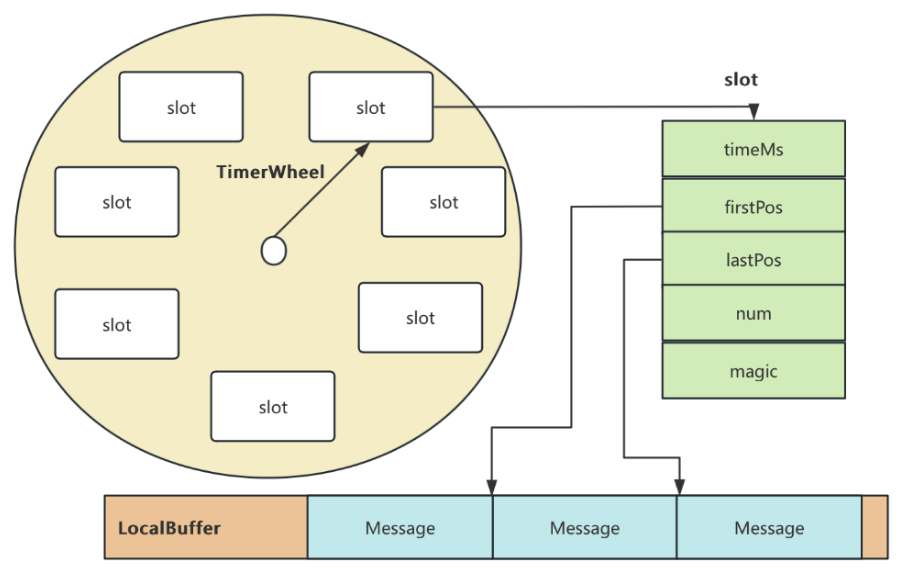
RocketMQ延迟消息机制
两种延迟消息 RocketMQ中提供了两种延迟消息机制 指定固定的延迟级别 通过在Message中设定一个MessageDelayLevel参数,对应18个预设的延迟级别指定时间点的延迟级别 通过在Message中设定一个DeliverTimeMS指定一个Long类型表示的具体时间点。到了时间点后…...
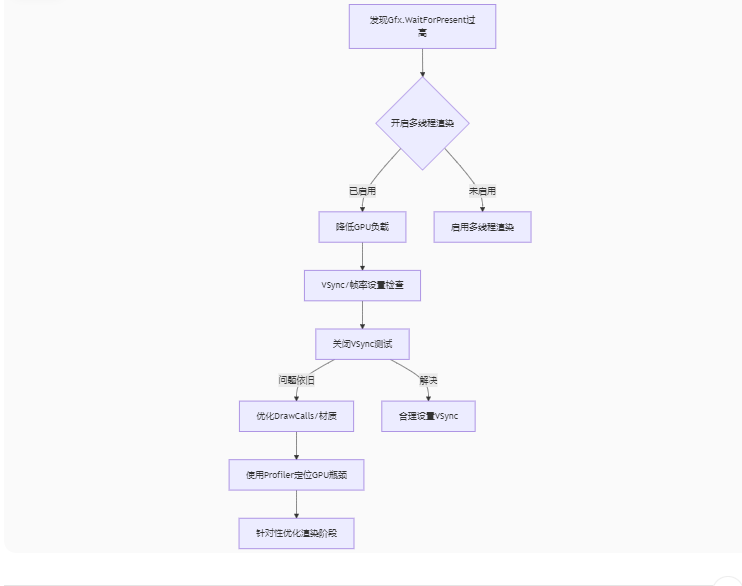
Unity3D中Gfx.WaitForPresent优化方案
前言 在Unity中,Gfx.WaitForPresent占用CPU过高通常表示主线程在等待GPU完成渲染(即CPU被阻塞),这表明存在GPU瓶颈或垂直同步/帧率设置问题。以下是系统的优化方案: 对惹,这里有一个游戏开发交流小组&…...

Ascend NPU上适配Step-Audio模型
1 概述 1.1 简述 Step-Audio 是业界首个集语音理解与生成控制一体化的产品级开源实时语音对话系统,支持多语言对话(如 中文,英文,日语),语音情感(如 开心,悲伤)&#x…...
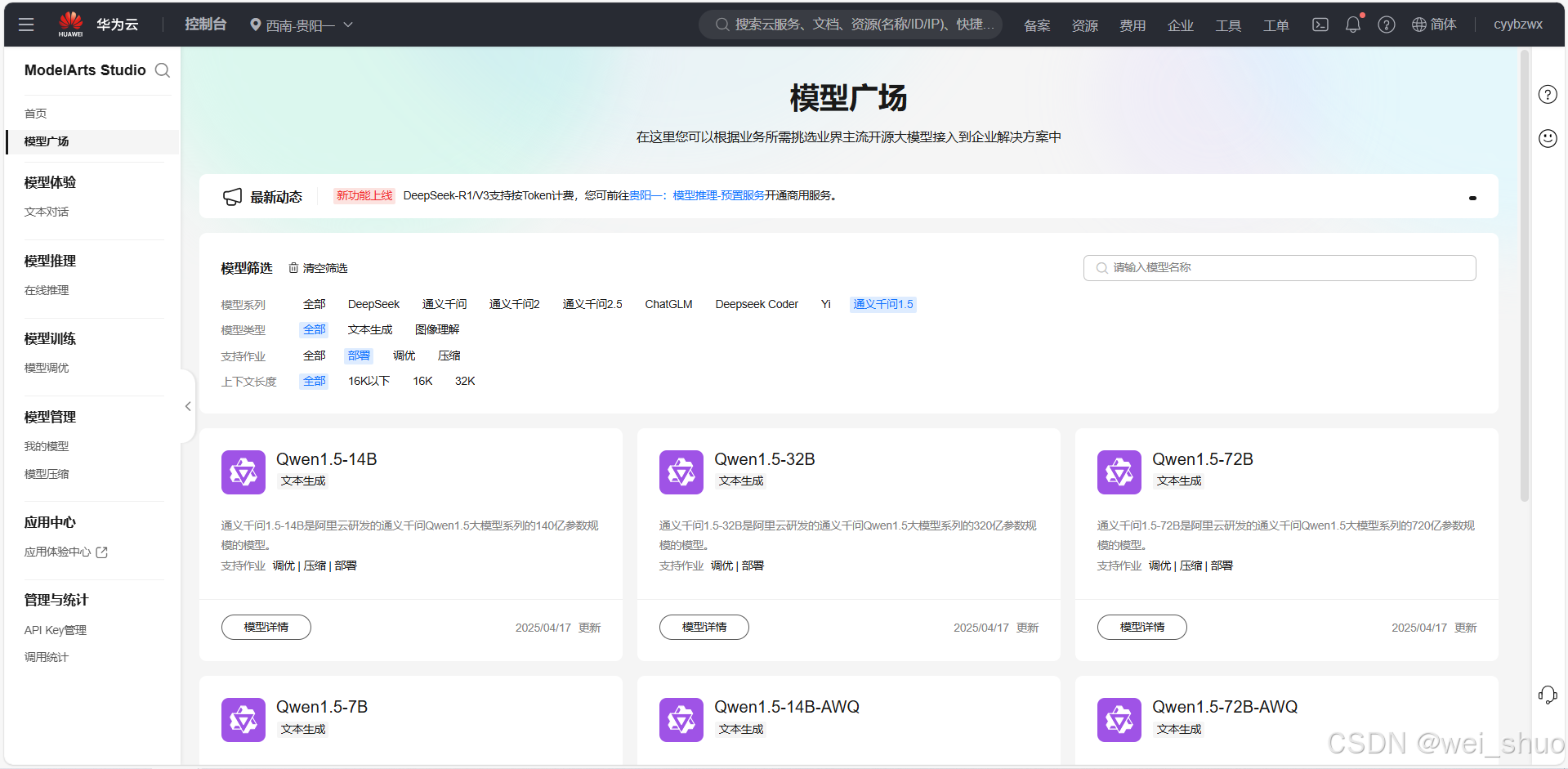
华为云Flexus+DeepSeek征文|DeepSeek-V3/R1 商用服务开通全流程与本地部署搭建
华为云FlexusDeepSeek征文|DeepSeek-V3/R1 商用服务开通全流程与本地部署搭建 前言 如今大模型其性能出色,华为云 ModelArts Studio_MaaS大模型即服务平台华为云内置了大模型,能助力我们轻松驾驭 DeepSeek-V3/R1,本文中将分享如何…...
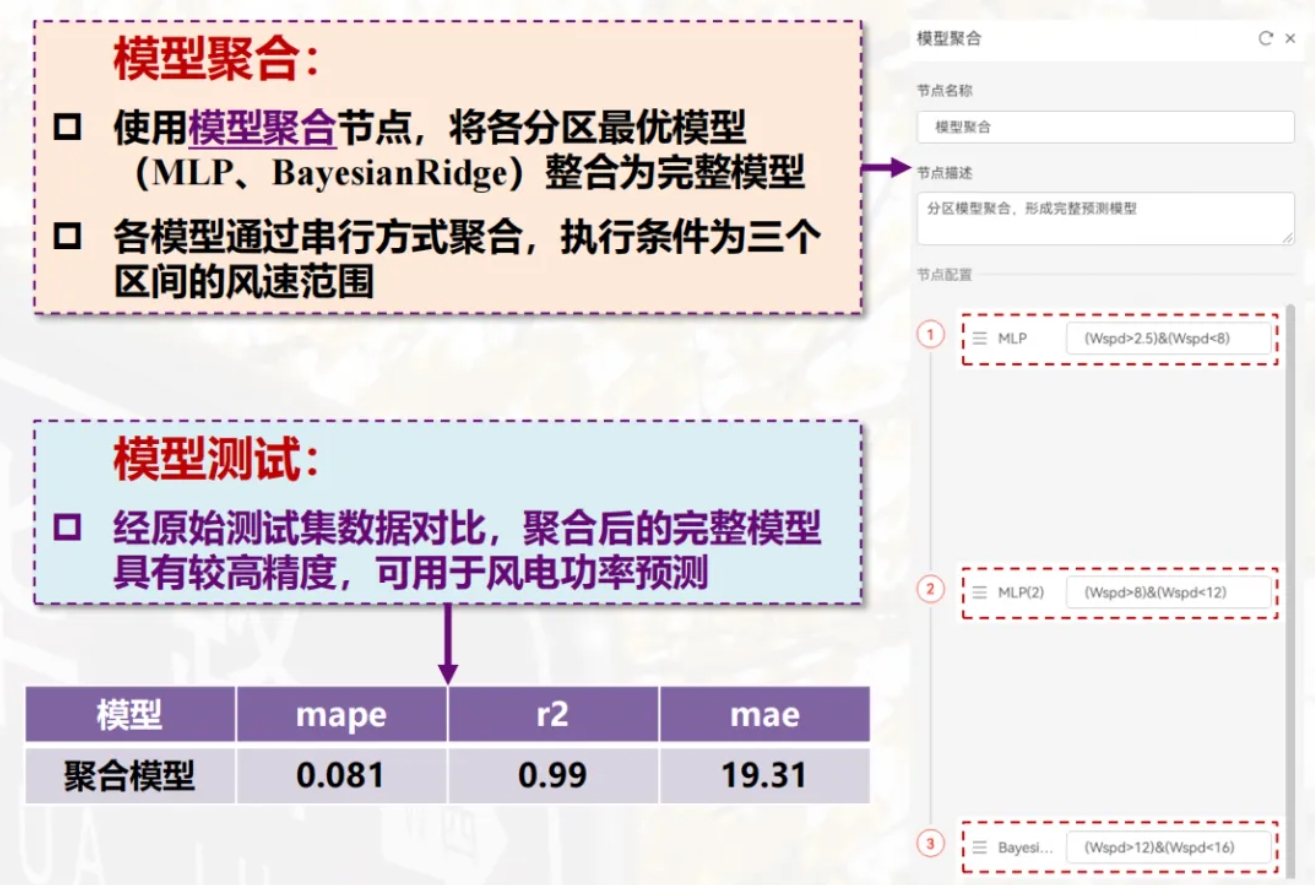
用机器学习破解新能源领域的“弃风”难题
音乐发烧友深有体会,玩音乐的本质就是玩电网。火电声音偏暖,水电偏冷,风电偏空旷。至于太阳能发的电,则略显朦胧和单薄。 不知你是否有感觉,近两年家里的音响声音越来越冷,听起来越来越单薄? —…...

vulnyx Blogger writeup
信息收集 arp-scan nmap 获取userFlag 上web看看 一个默认的页面,gobuster扫一下目录 可以看到扫出的目录中得到了一个有价值的目录/wordpress,说明目标所使用的cms是wordpress,访问http://192.168.43.213/wordpress/然后查看源码能看到 这…...

站群服务器的应用场景都有哪些?
站群服务器主要是为了多个网站的托管和管理所设计的,可以通过集中管理和高效资源的分配,来支持多个独立的网站同时运行,让每一个网站都可以分配到独立的IP地址,避免出现IP关联的风险,用户还可以通过控制面板进行管理功…...

mac:大模型系列测试
0 MAC 前几天经过学生优惠以及国补17K入手了mac studio,然后这两天亲自测试其模型行运用能力如何,是否支持微调、推理速度等能力。下面进入正文。 1 mac 与 unsloth 按照下面的进行安装以及测试,是可以跑通文章里面的代码。训练速度也是很快的。 注意…...
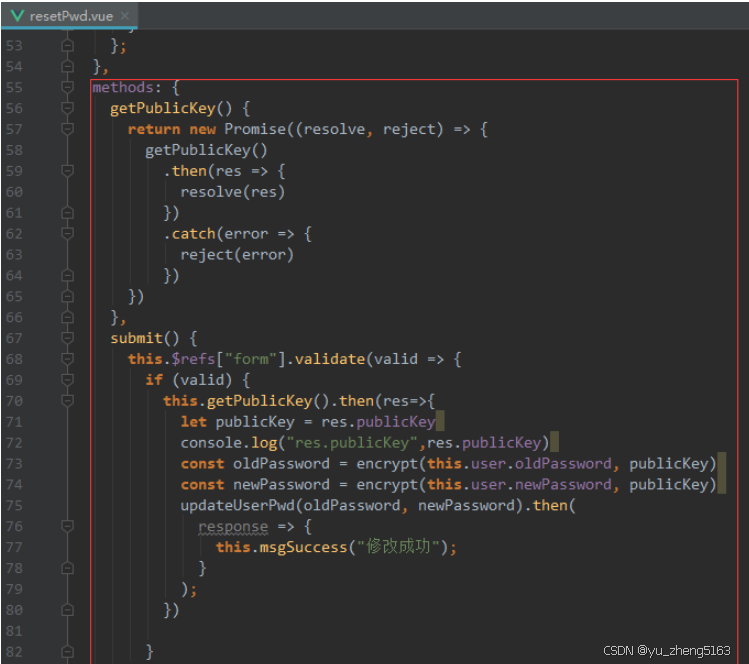
若依登录用户名和密码加密
/*** 获取公钥:前端用来密码加密* return*/GetMapping("/getPublicKey")public RSAUtil.RSAKeyPair getPublicKey() {return RSAUtil.rsaKeyPair();}新建RSAUti.Java package com.ruoyi.common.utils;import org.apache.commons.codec.binary.Base64; im…...

加密通信 + 行为分析:运营商行业安全防御体系重构
在数字经济蓬勃发展的时代,运营商作为信息通信网络的核心枢纽,承载着海量用户数据与关键业务传输,其安全防御体系的可靠性直接关乎国家安全、社会稳定与企业发展。随着网络攻击手段的不断升级,传统安全防护体系逐渐暴露出局限性&a…...
